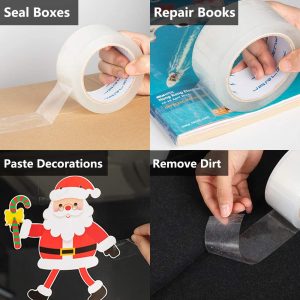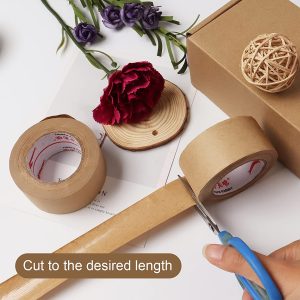Masking tape is a versatile tool that offers precision and control in various DIY projects. It’s particularly useful for creating clean lines, protecting surfaces, and achieving professional-looking results. Here’s how to harness the masking tape magic for precision in your DIY projects:
1. Surface Preparation:
- Ensure that the surfaces you’re working on are clean, dry, and free from dust or debris. Proper surface preparation is crucial for achieving a clean finish.
2. Choosing the Right Tape:
- Select a high-quality painter’s or masking tape. Ensure that it’s designed for clean removal and won’t damage surfaces or leave residue behind.
3. Planning and Measuring:
- Plan your project and measure the areas where you’ll be applying the tape. Use a ruler or a straight edge for accurate measurements.
4. Applying the Tape:
- Apply the masking tape along the lines or edges where you want to create a boundary or protect a surface. Press down firmly but avoid stretching the tape.
5. Using Multiple Tapes:
- For complex designs or patterns, use multiple pieces of tape to create the desired shapes. Overlapping tapes slightly can help achieve intricate designs.
6. Creating Borders and Patterns:
- Masking tape is great for creating sharp borders and patterns on walls, furniture, or other surfaces. Use it to create stripes, chevrons, or geometric shapes.
7. Paint Protection:
- If you’re painting, use masking tape to protect areas that you want to keep paint-free. Apply the tape along the edge of the area you’re painting to achieve clean lines.
8. Varying Tape Widths:
- Depending on your project’s needs, you can use different widths of masking tape to create varying line thicknesses and patterns.
9. Cutting Techniques:
- For curved lines, use a sharp craft knife or scissors to carefully cut the tape along the desired shape. Take your time to ensure clean cuts.
10. Pressing Down Edges:
- To prevent paint from bleeding under the tape, press down the edges of the tape firmly using a putty knife or your fingernail. This creates a tight seal.
11. Painting Technique:
- When painting, use a brush or roller to apply the paint. Paint away from the tape edge to avoid pushing paint under the tape.
12. Removing the Tape:
- Remove the masking tape carefully while the paint is still wet or after it’s fully dried. Pull the tape back on itself at a low angle to prevent lifting paint.
13. Touching Up:
- After removing the tape, inspect the painted edges. If there are any minor imperfections, you can touch them up with a small brush.
14. Experiment and Practice:
- Don’t be afraid to experiment with masking tape to create different effects and designs. Practice on a spare piece of material if you’re trying a new technique.
From painting walls to crafting intricate designs, masking tape is a tool that can greatly enhance precision in your DIY projects. Its flexibility and adhesive properties allow you to achieve clean lines and protect surfaces, making your creations look professional and polished.


















